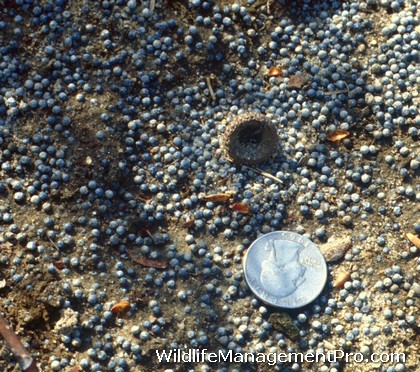Research on lead in the environment has found detrimental impacts on fish and wildlife species. Lead is also an important component of fishing lures and shotgun shells used for hunting and target practice. Lead is also bad for hunters that fail to thoroughly inspect their game before consuming it. Recently, a coalition of conservation, hunting and veterinary groups today filed a formal petition with the Environmental Protection Agency requesting a ban on lead in hunting ammunition and fishing tackle.
Major efforts to reduce lead exposure to people have greatly reduced the amount of lead in the environment, but toxic lead is still a widespread killer in the wild, harming bald eagles, trumpeter swans, endangered California condors and other wildlife. It’s not a safe substance at all.
“It’s long past time do something about this deadly – and preventable – epidemic of lead poisoning in the wild,” said Jeff Miller of the Center for Biological Diversity. “Over the past several decades we’ve wisely taken steps to get lead out of our gasoline, paint, water pipes and other sources that are dangerous to people. Now it’s time to get the lead out of hunting and fishing sports to save wildlife from needless lead poisoning.”

An estimated 10 million to 20 million birds and other animals die each year from lead poisoning in the United States. This occurs when animals scavenge on carcasses shot and contaminated with lead bullet fragments, or pick up and eat spent lead-shot pellets or lost fishing weights, mistaking them for food or grit. Some animals die a painful death from lead poisoning while others suffer for years from its debilitating effects.
“The science on this issue is massive in breadth and unimpeachable in its integrity,” said George Fenwick, president of American Bird Conservancy. “Hundreds of peer-reviewed studies show continued lead poisoning of large numbers of birds and other animals, and this petition is a prudent step to safeguard wildlife and reduce unacceptable human health risks.”
American Bird Conservancy, Center for Biological Diversity, Association of Avian Veterinarians, Public Employees for Environmental Responsibility, and the hunters’ group Project Gutpile are asking for the lead shot ban under the Toxic Substances Control Act, which regulates dangerous chemicals in the United States.
“As a hunter in California, compliance with the recent state nonlead ammunition regulation has been simple,” said Anthony Prieto, a hunter and co-founder of Project Gutpile, a hunter’s group that provides educational resources for lead-free hunters and anglers. “I still get to hunt, there is no toxic impact on wildlife or my health, and copper bullets shoot better.”
The petition references nearly 500 peer-reviewed scientific studies that starkly illustrate the widespread dangers from lead ammunition and fishing tackle. Lead is an extremely toxic substance that is dangerous to people and wildlife even at low levels. Exposure can cause a range of health effects, from acute poisoning and death to long-term problems such as reduced reproduction, inhibition of growth and damage to neurological development. In the United States, 3,000 tons of lead are shot into the environment by hunting every year, another 80,000 tons are released at shooting ranges, and 4,000 tons are lost in ponds and streams as fishing lures and sinkers. At least 75 wild bird species are poisoned by spent lead ammunition, including bald eagles, golden eagles, ravens and endangered California condors. Despite being banned in 1992 for hunting waterfowl, spent lead shotgun pellets continue to be frequently ingested by swans, cranes, ducks, geese, loons and other waterfowl. These birds also consume lead-based fishing tackle lost in lakes and rivers, often with deadly consequences.
Lead ammunition also poses health risks to people. Lead bullets explode and fragment into minute particles in shot game and can spread throughout meat that humans eat. Studies using radiographs show that numerous, imperceptible, dust-sized particles of lead can infect meat up to a foot and a half away from the bullet wound, causing a greater health risk to humans who consume lead-shot game than previously thought.
A recent study found that up to 87 percent of cooked venison and other game killed by lead ammunition can contain unsafe levels of lead. This included feral hogs and white-tailed deer as well as waterfowl and small game. State health agencies have had to recall venison donated to feed the hungry because of lead contamination from lead bullet fragments. Nearly 10 million hunters, their families and low-income beneficiaries of venison donations may be at risk. The lead ban petition is targeting environmental, wildlife and hunter safety, not hunting itself.